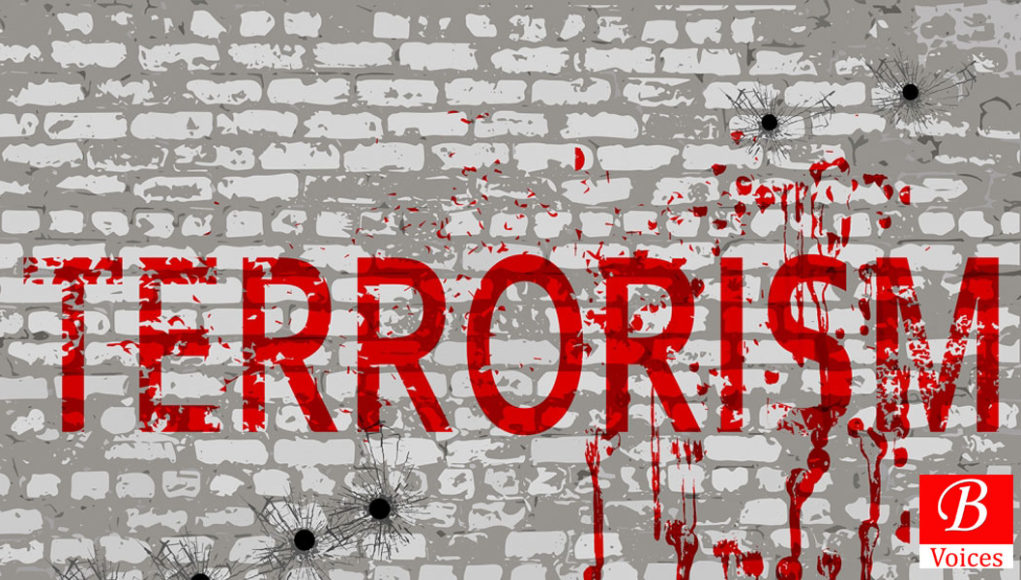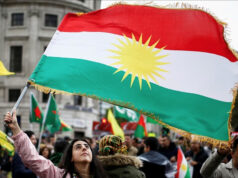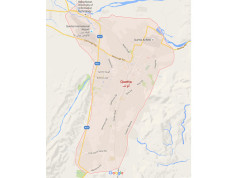Dervaish Ali
“Created by the wars that required it, The Machine now creates the wars it requires!” Joseph Schumpeter
“Those who make you believe absurdities, can make you commit atrocities, too.” Voltaire
Evil strikes again in Quetta! The by-now ritualistic mass killing, the ethno-sectarian cleansing of the Hazaras, continues unabated in Quetta, with an uneasy lull between every two butchering. “Twenty (20) killed, 48 injured in attack targeting Hazara community in Quetta” read the headlines of April 12. The Deputy Inspector General of Police Balochistan (DIG) Abdul Razzaq Cheema confirmed at the site of the blast in Hazargani that the blast targeted the Hazara ethnic community: “The attack took place in a shop. An Improvised Explosive Device (IED) was planted in a gunny sack filled with potatoes. Whether it was timed or remote-controlled, our experts will tell. Right now they are investigating,” DIG Cheema told reporters at the site of the attack. Qadir Nayil, the recently elected Hazara community and political leader, promptly asked the government for provision of better protection of the Hazaras in the region: “Once again our people were the target and once again we will have to bury our dear ones….We demand more security from the government and all those involved in today’s act of terrorism should be found and punished”, he said. All so predictable, necessary though. The Prime Minister of Pakistan, Insaaf Khan, has condemned the “terrorist attack” and has ordered “an immediate inquiry”! That, too, so very predictable. Whatever happened to all the previous inquiries? Why are Hazaras still getting killed so indiscriminately in “naya Pakistan” and why are they ghettoized in two internment camps in Quetta city?
All these predictable analyses and reactions are too simplistic, and they obfuscate more than clarify the issues involved. We need to look at these acts of evil in a different way.
In these “nothing-is-sacred” and “everything-goes” postmodern times of digital manipulation, of sociopath manufacturing and celebrating social media, of rampant cycles of disinformation and fake news churned out by immoral corporate shills on TV and online, of real-time computer algorithms that know more about us than we do ourselves, we need to “update” our sense and understanding of evil. It is not enough to say that “it was a sectarian killing” or that “it was a terrorist attack” and so on. Of course they were those things, but not just that and not carried out by just one fixed, stereotypical group of perpetrators for one fixed reason. The agents are many, just as the motivations are different in a highly problematic and repeatedly violated region of the country with so many contesting interests and their narratives vying for attention.
Let me explain. For example, in certain big cities of Pakistan where the land mafia is powerful, one of the most efficient and cost effective ways to grab land for development into prime real estate from those who happen to be the legal occupants of that land—-the poor and the powerless who often belong to a minority ethnic or religious group—is to (ab) use the “blasphemy” laws of the Islamic Republic. Christians, Hindus and other voiceless minority communities who refuse to vacate their ancestral lands for the powerful land mafia and their invisible backers in the system are conveniently, and frequently, found guilty of some form of “blasphemy”! We all know what happens after that.
Fear is an important “management” tool of modern political cultures everywhere. By constantly keeping the populace afraid, the cost-benefit conscious political entrepreneurs of today—the corporate state, the national security elites or the war lobby and other vested interests and status quo advocates and beneficiaries usually lumped together as “The Establishment”— use fear as their most effective tool to manipulate and control the citizenry. Combined with the many bread and circus shows on TV and Internet that constantly “entertain” the compliant masses, the narratives of fear and hatred constructed meticulously by these elites and their handlers achieve their evil ends quite successfully. Among other things, they manufacture bogeymen, imaginary monsters within and without the land, to create fear and insecurity among the masses so that they can maintain their octopus like death grip on the main institutions and resources of the country. With these manufactured narratives they justify their criminal, bloodsucking existence. The existence of “the enemy” made consumable through the propagation of the poisonous narratives is necessary for keeping the people scared and when people are scared they are easy to manipulate and deceive. In short, the successful survival of these mafias, both civilian and non-civilian, depends on the effective use of the narratives of fear and hatred. The manufactured “enemies” of country and faith especially serve their interests best. TV and social media are their instruments of choice. The recent Facebook revelations are telling proofs of this.
In all such machinations, acts of systematic and unremitting violence, the crucial question to ask is this: Cui Bono? meaning Who benefits? Take the case of the decade old Hazara killings in Balochistan. It is important to understand the full context of these crimes against this old community of Quetta city. While there is no doubt that the Hazaras are being butchered for the two most obvious reasons of sect and ethnicity, they being members of a minority Islamic sect (Shia) and also being members of an ethnic group, the political and economic situation of the city and of the province in general complicates, or adds a certain layer of complexity to these genocidal killings. I hinted at one aspect of this complexity in two of my previous blogposts on Ethnic Cleansing and Sectarianism in Quetta City where I wrote about the possible involvement of non-sectarian, non-religious, secular elements: individuals and groups who benefit financially from these crimes against the Hazara community. Sometimes it is just mundane, worldly interests that are the prime motivations behind these crimes, and not some religious fanaticism or ideological zealotry, as is commonly assumed. In other words, this ethnocide is not, or not only, for some high-minded, other-worldly metaphysical reasons, not just for God and faith, but for mammon—for money and power– the powerful gods of this world. The political psychologist and public intellectual Ashis Nandy has done important work in this regard. In his brilliant study titled “Creating a Nationality”, which is a critical study of the formation and rise of Hindu communalism in India, Nandy explains that competitive mass politics meaning mafia-style organized politics as investment— “normal” calculating politics as business— in this region of the world demand communal and sectarian mobilizations to generate handsome financial rewards. For example, communal riots are professionally organized and are never spontaneous. Says Nandy,
“…communal attitudes by themselves do not lead to violence in a politically ill-organized society. The violence has to be specifically organized by groups keen to politically cash in on the fall out of such violence. Those who organize the violence or encash it politically are not necessarily communal. They can be fully secular in their calculations and are often in league with politicians of the victim communities…communal riots have become over the years one of the most secularized aspects of Indian public life.” (Nandy 1998: 17-18).
So, it may well be that not only the professionally planned and executed massacre of Hazaras but also, and especially, the unprofessional “protection” extended to them have both become a source of revenue, a huge, profitable racket for some! A vicious setup, indeed, if this is true, and very unfortunate for the future of Hazaras in Quetta city.
Balochistan, mainly because of its strategic location and its natural resources, is now a stage set for different economic, political, cultural and even civilizational games, including potentially violent conflicts involving local, regional and global powers. It is constantly in the spotlight in the international press and the subject of strategic studies at regional and global institutions of economic and political significance. While the province has been internally colonized and plundered for decades, in fact, ever since it joined the federation—-the “sick Center” parasitic upon the “deceived Periphery”, to rephrase the memorable expressions of the ex-Marxist intellectual Roger Garaudy—-there are now external forces involved, powerful interests that are fast becoming the new neo-colonial overlords of Balochistan, all in the name of “development” (taraqqee) , that whore of a word that never materializes for the people of the province, as one mealy-mouthed politician from Islamabad follows another with planeloads of promises every time they descend on the province. This obscenity was witnessed once again by the unfortunate people of the province just a couple of weeks ago. The lies and hypocrisies of these charlatans have been piling up over the years, the enormity and ugliness of which never shame them or their mouthpieces! It is this context within which we need to see and understand these acts of injustice and violence against the people of the province, whether they be the disappeared Baloch dissidents, the Pushtun activists or the Hazaras. One must resist easy clichés and rhetorical fluff presented as arguments and explanations.
Disclaimer: Views expressed in this article are those of the author and Balochistan Voices not necessarily agrees with them.
Share your comments!









